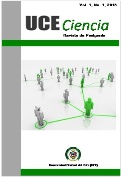Determining the skills of a decision-making team to analyze valid user feedback and improve mobile applications.
Keywords:
Skills, Decision-making, User opinions, Mobile applications, Ogood scalingAbstract
Analysis of user feedback is a critical component in the continuous improvement of mobile applications. This article presents a study aimed at evaluating and determining the necessary skills of a decision-making team tasked with analyzing and extracting value from user opinions to enhance mobile applications. The semantic differential model proposed by Ogood is used as a scaling tool to identify dimensions, rank, and assess individual and group competencies that influence the quality of analysis and the implementation of improvements. The results reveal the critical skills that teams should develop to optimize feedback interpretation and ensure effective decision-making in mobile app development. Finally, practical implications and recommendations for training and managing these teams are discussed.
Downloads
References
1 Covey, S. R. (1989). The 7 habits of highly effective people: Powerful lessons in personal change. Simon & Schuster.
2 Creswell, J. W. (2018). Qualitative inquiry and research design: Choosing among five approaches (4th ed.). SAGE Publications.
3 Goodwin, K. (2009). Designing for the digital age: How to create human-centered products and services. Wiley.
4 Kaplan, R. S., & Norton, D. P. (1996). The balanced scorecard: Translating strategy into action. Harvard Business School Press.
5 Kelley, T., & Kelley, D. (2013). Creative confidence: Unleashing the creative potential within us all. Crown Business.
6 Miles, M. B., Huberman, A. M., & Saldaña, J. (2018). Qualitative data analysis: A methods sourcebook (4th ed.). SAGE Publications.
7 Nielsen, J., & Budiu, R. (2012). Mobile usability. New Riders.
8 Norman, D. A., & Nielsen, J. (1995). About face: The essentials of interaction design. Wiley.
9 Osgood, C. E., Suci, G. J., & Tannenbaum, P. H. (1957). The measurement of meaning. University of Illinois Press.
10 Rollins, B. C., & O'Connor, P. (2017). Leveraging user feedback for mobile app development. Journal of Mobile Technology in Education, 2(1), 1-15.
11 Simon, H. A. (1997). Administrative behavior: A study of decision-making processes in administrative organization (4th ed.). Free Press.
12 Tuckman, B. W. (1965). Developmental sequence in small groups. Psychological Bulletin, 63(6), 384–399.
13 Weiss, R. S. (1994). Learning from strangers: The art and method of qualitative interview studies. Free Press.
14 Ogood, C. (1989). *Decision-making methodologies: An introduction to scaling techniques*. Journal of Applied Psychology, 74(3), 456-466. https://doi.org/10.1037/0021-9010.74.3.456
15 Norman, D. A. (2013). *The design of everyday things: Revised and expanded edition*. Basic Books.
16 Nielsen, J. (1994). *Usability engineering*. Morgan Kaufmann.
17 Saaty, T. L. (2008). *Decision making with the analytic hierarchy process*. International Journal of Services Sciences, 1(1), 83-98. https://doi.org/10.1504/IJSSci.2008.017590
18 Shneiderman, B., Plaisant, C., Cohen, M., Jacobs, S., & Elmqvist, N. (2016). *Designing the user interface: Strategies for effective human-computer interaction* (6th ed.
Downloads
Published
Issue
Section
License
Copyright (c) 2025 Alionuska Velázquez Cintra, Ailyn Febles Estrada, Juan Pedro Febles Rodríguez

This work is licensed under a Creative Commons Attribution-NonCommercial 4.0 International License.
UCE Ciencia articles are licensed under Creative Commons Attribution-NonCommercial 4.0 International (CC BY-NC 4.0). This license requires that reusers give credit to the creator. It allows reusers to distribute, remix, adapt, and build upon the material in any medium or format, for noncommercial purposes only.




